Photography as we know it today may have been born only a few centuries ago, but imagine if we could step into the past and photograph life from earlier ages—using the timeless grain and warmth of 35mm film. In this journey, we will explore various periods of history, from the Stone Age to Late Antiquity, captured as if they were frozen in time by a film camera. The images are vivid, nostalgic, and full of life, giving us a glimpse into the everyday moments of ancient peoples.
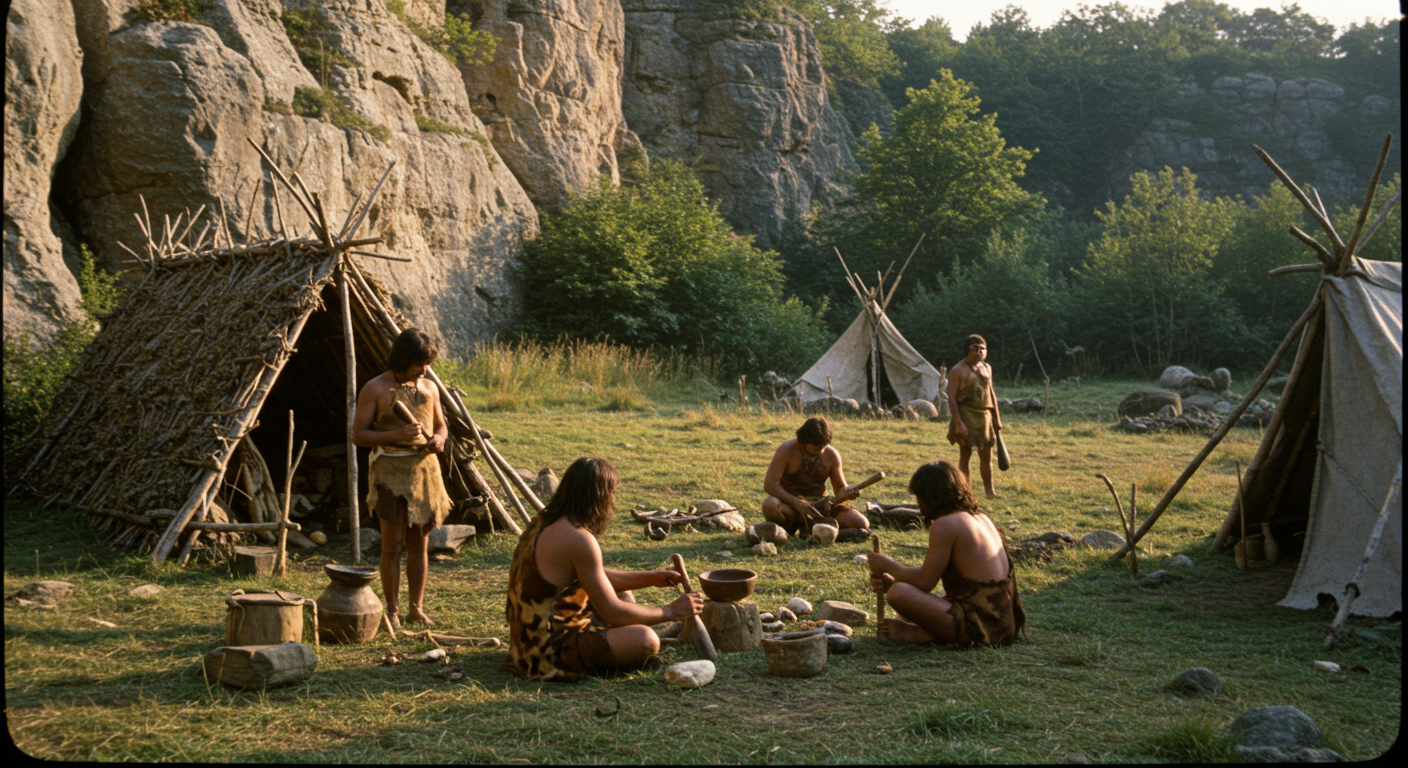
The Stone Age: Simple Beginnings
Imagine a quiet moment in the Stone Age, captured with the grainy texture of 35mm film. A small group of people, perhaps gathered in a dense forest or by a river, are engaged in their daily activities. Some are crafting tools from flint and bone, while others prepare food or paint on the walls of a nearby cave. The light is soft, golden, as if taken during the early morning or late afternoon, casting long shadows on the ground. The film grain adds texture to the image, making the scene feel timeless and grounded in the natural world. These early humans, wearing simple animal hide clothing, lived close to nature, forging the tools and survival skills that would shape their future.
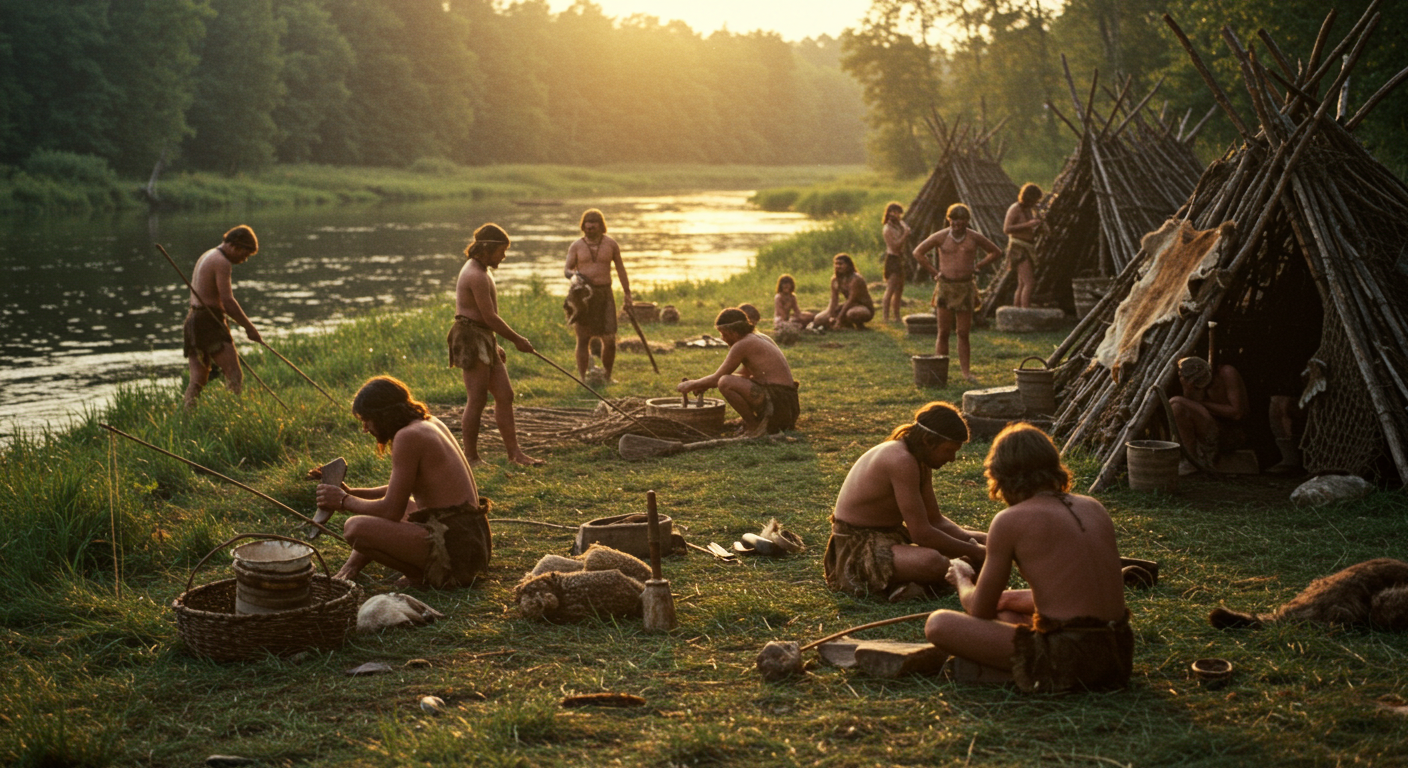
The Mesolithic Age: Transition and Innovation
As we move into the Mesolithic Age, we see a subtle shift in lifestyle. This is an era of adaptation and transition, where humans begin to settle into semi-permanent communities. Imagine capturing a moment where people are fishing with bone-tipped spears by a river, while others grind seeds or craft tools. Their clothing is made of woven fibers and animal skins, reflecting their evolving ingenuity. The setting is natural, with towering trees or rocky cliffs in the background. The film captures the texture of the land and the softness of the human form, underscoring the blend of tradition and innovation. Children play nearby, mimicking their elders, while families gather around the warmth of a fire. The moment feels serene yet full of the quiet promise of change.
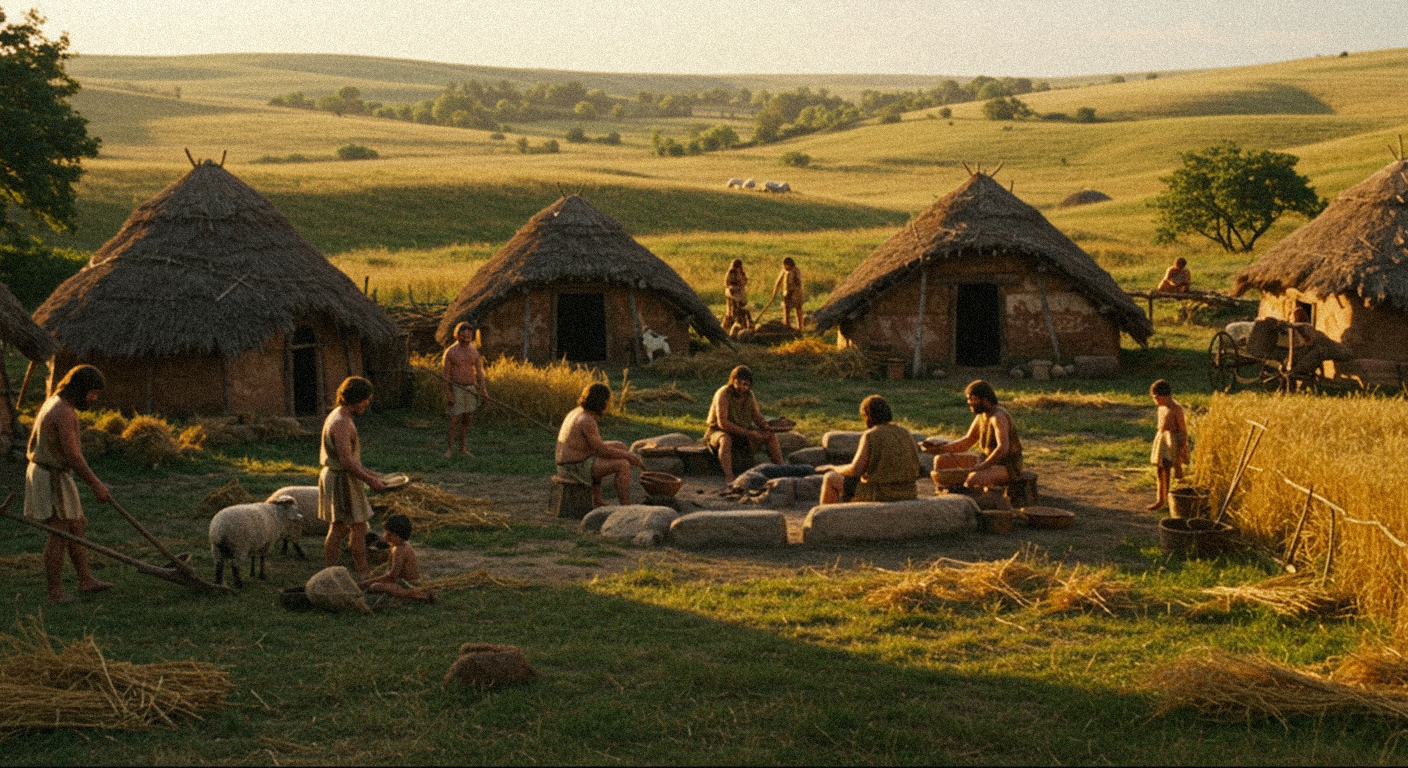
The Neolithic Age: Agricultural Revolution
By the time we reach the Neolithic Age, human society has undergone a significant transformation. With the rise of agriculture, people begin to settle in permanent villages. The image captured on 35mm film depicts a group of farmers at work in fertile fields, harvesting wheat and barley, while others tend to domesticated animals. In the foreground, a communal gathering unfolds around a stone hearth, where people share food stored in clay pots. The lighting is warm, casting a soft, golden hue over the scene. The film grain highlights the natural textures—rough stone, earthenware, and the simple fabrics of their clothing. This moment, though simple, reflects the profound changes in human life, as people master the land and build the foundations of civilization.
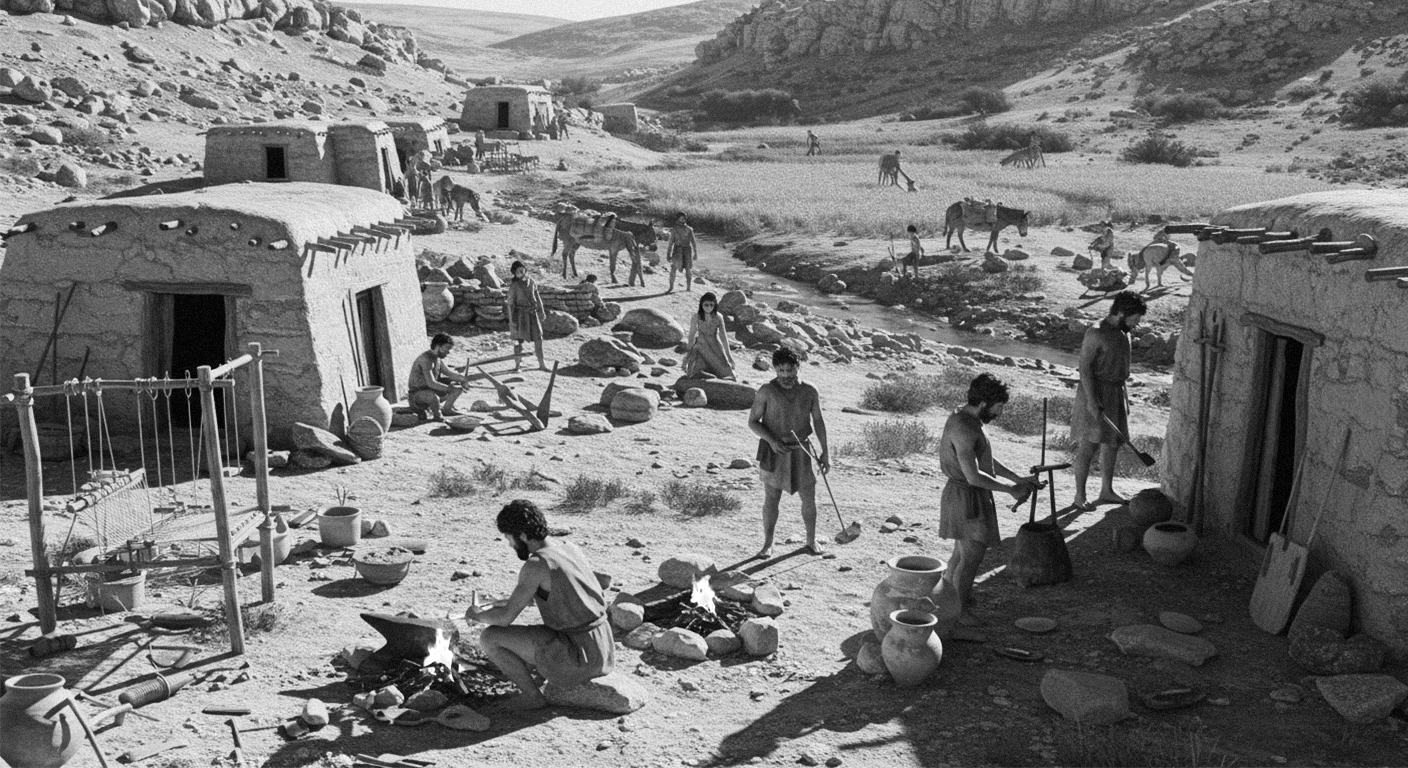
The Chalcolithic Age: Dawn of Metalworking
In the Chalcolithic Age, human societies begin to experiment with metallurgy, and we can imagine capturing an artisan at work in an open-air workshop, crafting copper tools by a roaring fire. The molten copper glows brightly as it is poured into molds, and the soft, flickering light casts intricate shadows across the stone ground. In the background, a woman weaves fabric, while children play nearby. The lighting is a warm, amber glow that reflects the early mastery of metal, creating an image filled with both skill and creativity. The film grain emphasizes the raw, hands-on nature of this time, where the spark of innovation began to shape the future of human society.
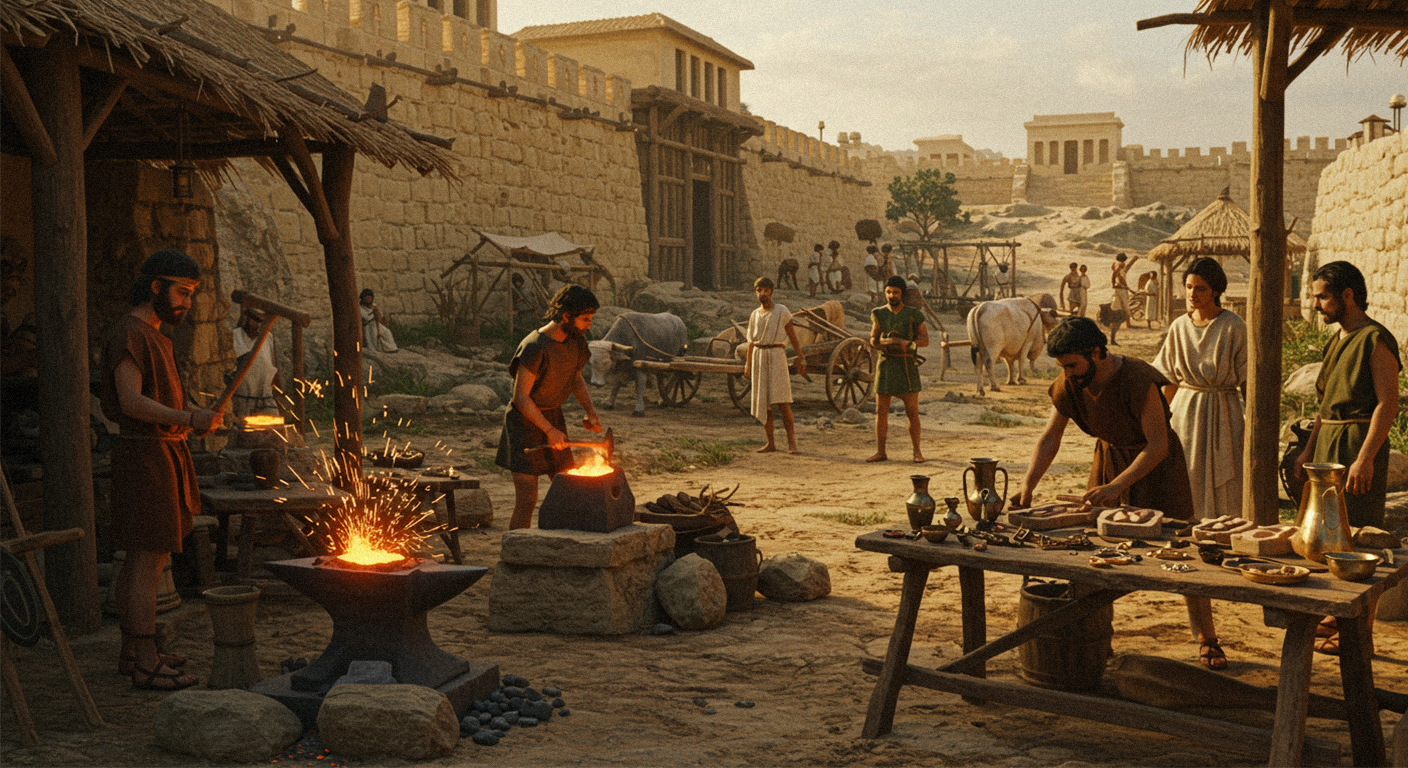
The Bronze Age: Craftsmanship and Community
As we enter the Bronze Age, the mastery of metalworking is well underway. Imagine a bustling Bronze Age settlement, where artisans work in a forge surrounded by the sounds of hammering bronze and the glow of molten metal. The people are gathered in a thriving market, exchanging goods like pottery, textiles, and finely crafted bronze tools. In the background, children play while adults barter, creating a lively and interconnected community. The soft light of a golden hour bathes the scene, highlighting the warmth of the bronze and the vibrancy of the surrounding environment. The grain of the 35mm film adds a sense of texture and nostalgia, as if this moment were frozen in time, marking the growth of an advanced and industrious society.
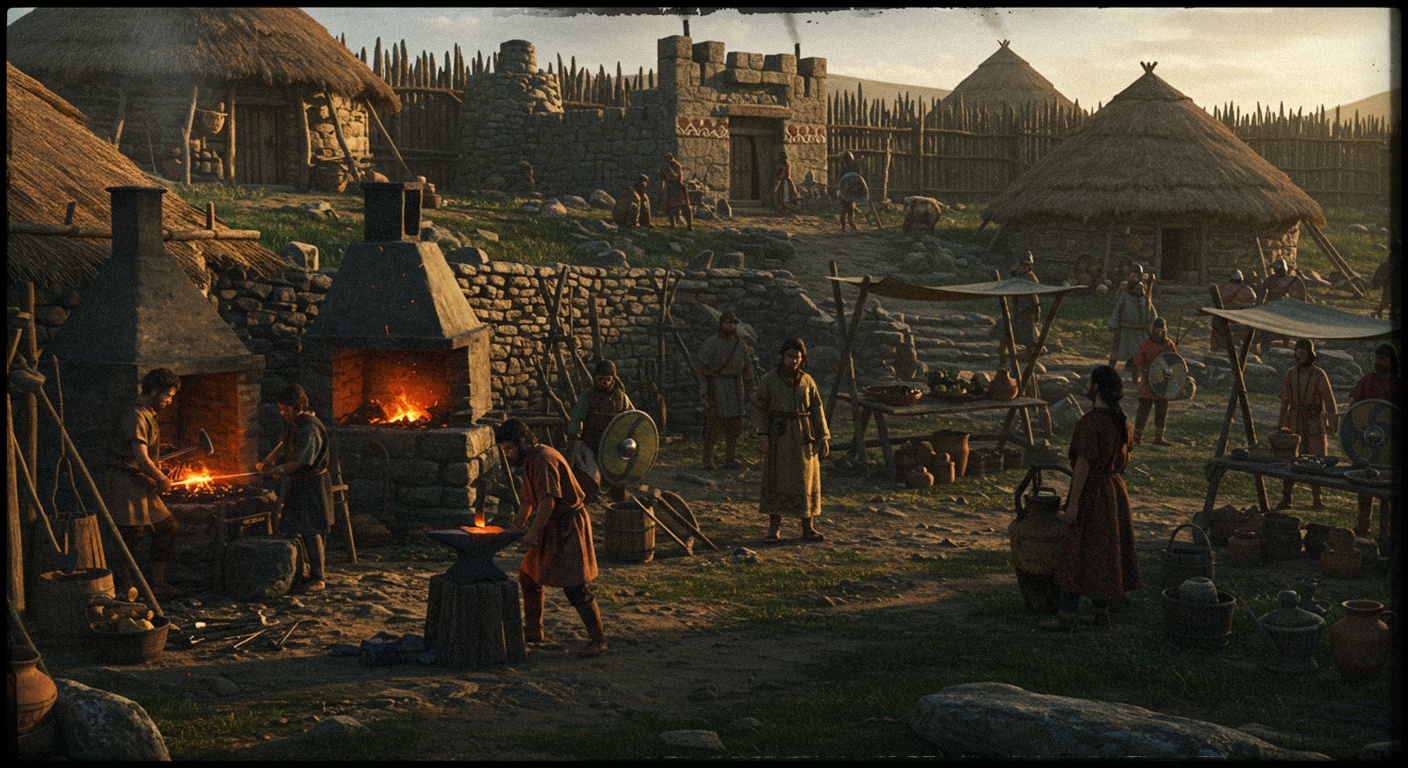
The Iron Age: Power and Change
The Iron Age brings with it the rise of more complex societies and the widespread use of iron tools and weapons. In the image, blacksmiths work tirelessly in an open-air forge, their faces glowing with the heat of the fire as they hammer iron into shape. Nearby, soldiers in iron armor stand guard, their disciplined presence contrasting with the everyday bustle of the market. Merchants sell goods, farmers harvest crops, and children play in the distance. The lighting is strong and natural, with sharp contrasts that emphasize the robust energy of this period. The film grain captures the grit and determination of a society in the midst of profound technological and social change.
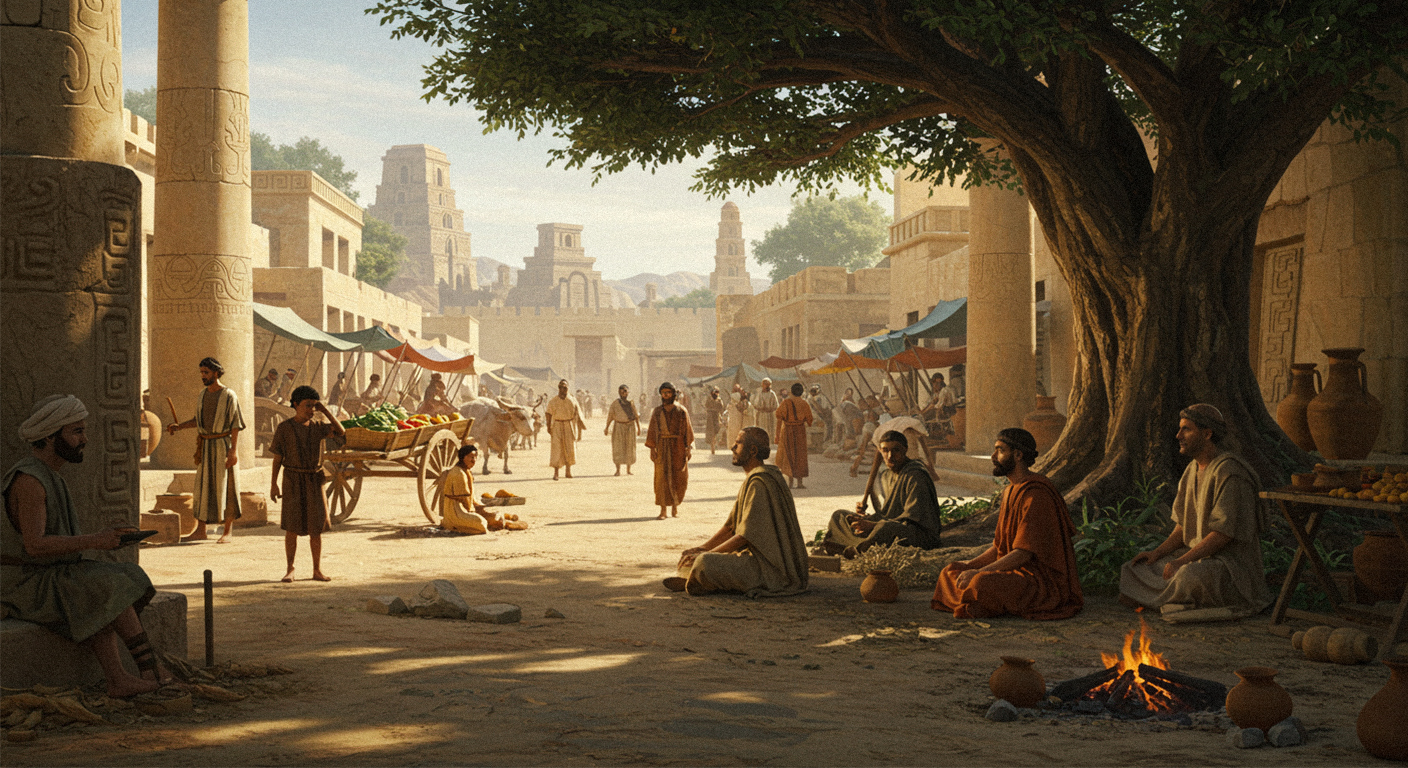
After the Iron Agen: Intellectual and Spiritual Flourishing
After Iron Age, humanity witnesses an intellectual and spiritual awakening that reshapes the course of history. The image shows a philosopher sitting beneath a tree, speaking to a small group of disciples, while in the background, scholars write down their teachings on papyrus scrolls. The marketplace is full of activity, with traders and merchants from distant lands exchanging ideas and goods. The golden light of the setting sun casts a soft glow over the scene, highlighting the depth of thought and the mingling of cultures during this transformative time. The grain of the film gives a sense of intimacy and authenticity, making the image feel as if it were taken during a quiet moment of reflection amidst a time of great change.
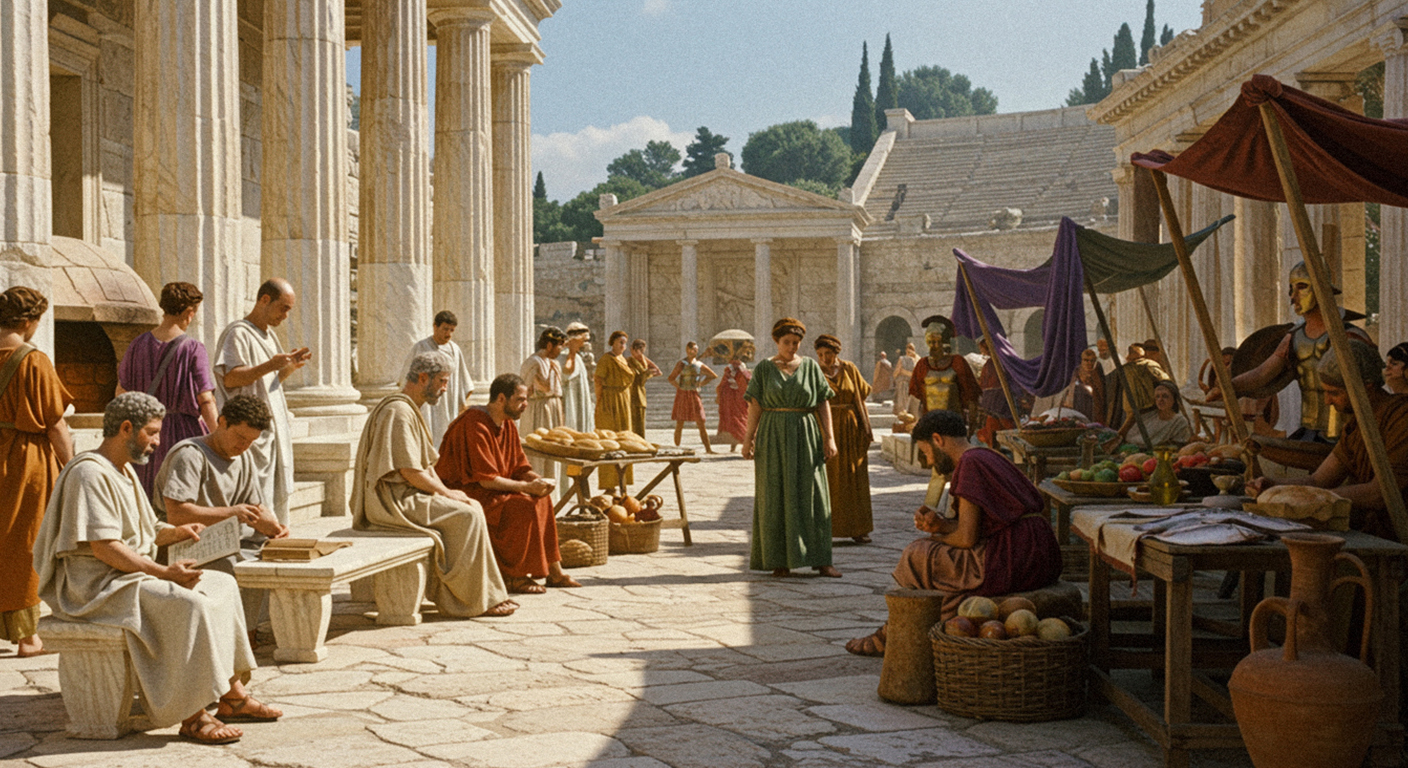
Classical Antiquity: The Height of Civilization
By the time we reach Classical Antiquity, ancient civilizations have reached their peak, and the image captures the vibrancy of life in a city square. Philosophers debate in the shade of a marble column, while merchants sell their goods in the marketplace. Soldiers stand guard, and children run through the streets, playing with toys or helping their parents. The architecture is grand, with towering temples and public buildings lining the square. The light is bright and clear, illuminating the marble and stone, while the film grain adds a timeless, documentary feel to the scene. This moment encapsulates the intellectual, artistic, and political achievements of the ancient world, showcasing the flourishing of human civilization at its peak.
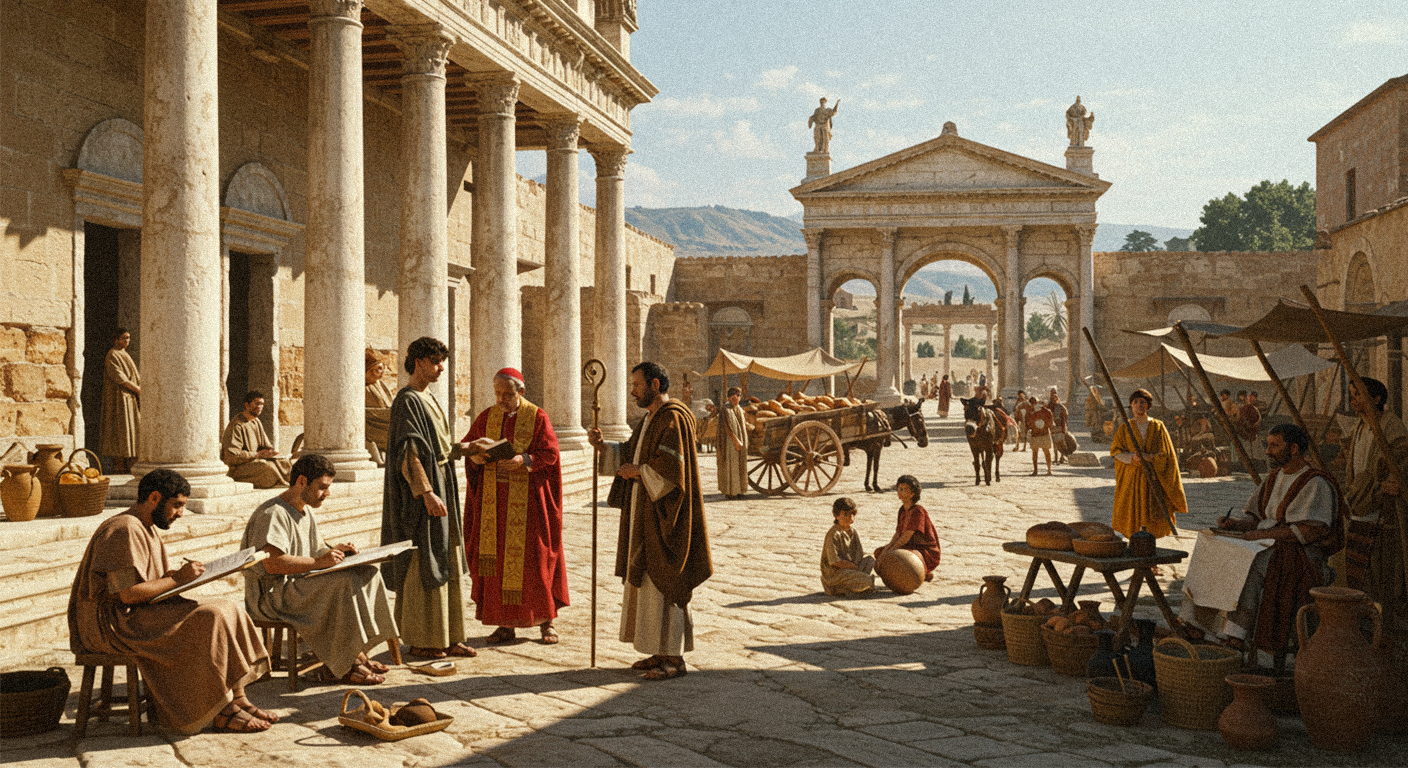
Late Antiquity: A World in Transition
The final image in our journey takes us to Late Antiquity, a time of transformation and upheaval. The scene is set in a city square, where the old Roman ruins stand next to newly constructed Christian churches. People are gathered in a moment of quiet contemplation or conversation, perhaps discussing philosophy, faith, or politics. Merchants barter, and artisans work on their craft, while soldiers, weary but resolute, guard the city gates. The light is soft and golden, casting long shadows over the fading remnants of the ancient world. The film grain adds a sense of nostalgia, capturing the final moments of an era before the world shifts into something new. This photograph embodies the spirit of a civilization in transition, blending the old with the new, as the foundations of the medieval world begin to take shape.
Through the lens of analog photography machine, we can step back in time and witness the daily lives of people from different ages. Each era has its own unique story, its own challenges, and its own moments of quiet beauty. From the Stone Age to Late Antiquity, these images transport us to a time when the foundations of modern civilization were being laid, showing us the human spirit in its most raw and authentic form.
The images are generated by artificial intelligence. They may contain inaccurate elements depending on the periods they depict.